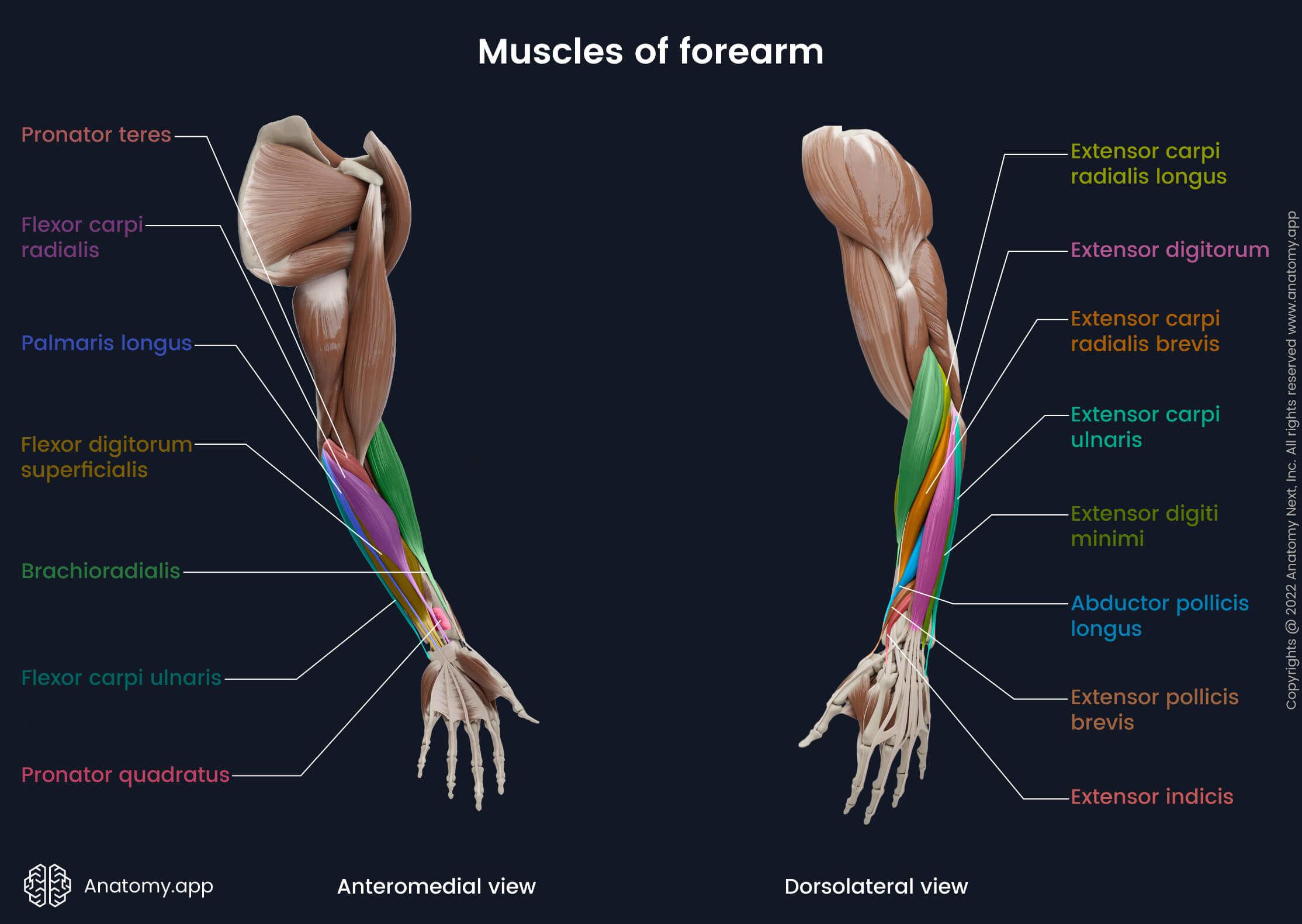- Anatomical terminology
- Skeletal system
- Joints
- Muscles
- Head muscles
- Neck muscles
- Muscles of upper limb
- Muscles of pectoral girdle
- Muscles of shoulder region
- Muscles of upper arm
- Muscles of forearm
- Anterior compartment
- Lateral compartment
- Posterior compartment
- Muscles of hand
- Thoracic muscles
- Muscles of back
- Muscles of lower limb
- Heart
- Blood vessels
- Lymphatic system
- Nervous system
- Respiratory system
- Digestive system
- Urinary system
- Female reproductive system
- Male reproductive system
- Endocrine glands
- Eye
- Ear
Flexor digitorum superficialis
The flexor digitorum superficialis (Latin: musculus flexor digitorum superficialis) is a flat and prominent muscle of the upper limb that stretches between the humerus, ulna, radius and phalanges. It is classified as a muscle of the forearm, which belongs to the anterior forearm compartment. It is the largest muscle of the group. The flexor digitorum superficialis is situated in the second layer of the anterior forearm compartment. This muscle is composed of two heads - humeroulnar and radial.
| Flexor digitorum superficialis | |
| Origin | Humeroulnar head - medial epicondyle of humerus, coronoid process of ulna Radial head - anterior margin of radius |
| Insertion | Bases of 2nd to 5th middle phalanges |
| Action | Flexion of phalanges at 2nd to 5th metacarpophalangeal and proximal interphalangeal joints, flexion of wrist |
| Innervation | Median nerve (C8, T1) |
| Blood supply | Median, ulnar and radial arteries |

Origin
The humeroulnar head of the flexor digitorum superficialis muscle originates from the medial epicondyle of the humerus and the coronoid process of the ulna. In contrast, the radial head arises from the proximal anterior margin of the radius.
Insertion
The flexor digitorum superficialis descends and via the carpal tunnel reaches the hand, where it splits into four tendons that insert on the bases of the second to fifth middle phalanges.
Action
The flexor digitorum superficialis muscle provides the flexion of the phalanges at the second to fifth metacarpophalangeal and proximal interphalangeal joints. Also, it assists in the flexion of the wrist at the wrist joint.
Innervation
The flexor digitorum superficialis is innervated by the median nerve (C8, T1) - a branch of the brachial plexus.
Blood supply
The flexor digitorum superficialis muscle receives arterial blood supply from the branches of the ulnar and radial arteries. The ulnar and radial arteries are branches of the brachial artery.